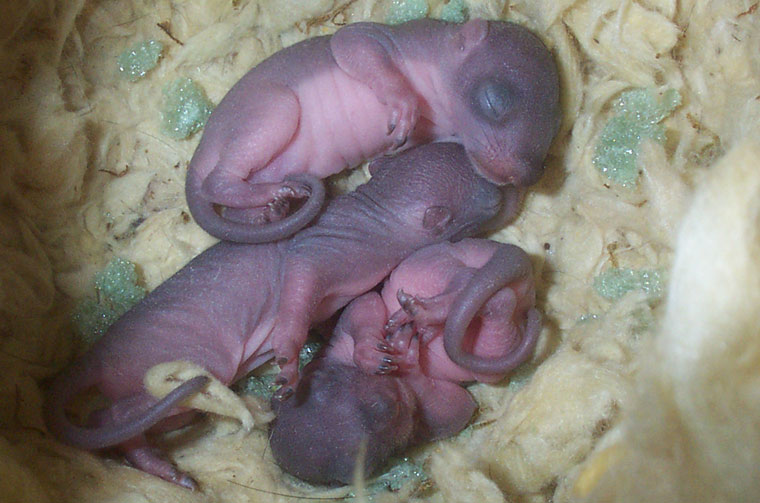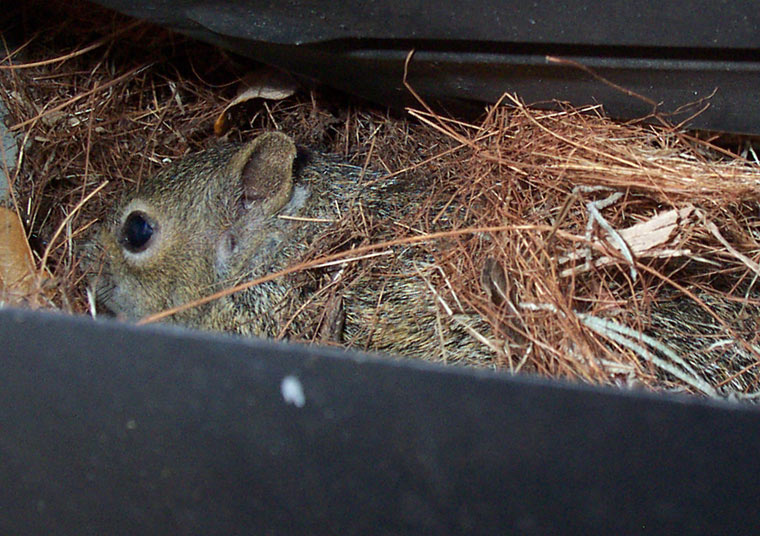- info@wildlife-removal.com
Call us for help in your town
Wildlife Removal Education
Squirrels in the Attic - Are There Babies Too?
Need squirrel removal in your hometown? We service over 500 USA locations! Click here to hire us in your town and check prices - updated for year 2020.
Although it won’t always be the case, the biggest reason behind squirrels taking up residence in your attic is to protect and care for a nest filled with babies. Squirrels can have up to eight young per litter, and two litters per year if the conditions are just right, but there are usually only a few — between one and four.

Having a nest of babies in the attic along with your squirrel interloper does make life slightly more challenging for you. Getting rid of one adult squirrel and three or four squirrel babies is a very different story from getting rid of just one squirrel. One squirrel is manageable and, even then, getting rid of the creature isn't an exact science.
You can’t rely on exclusion devices to get rid of a squirrel that has babies in a nest in your attic, and you can't rely on trapping either, unless you take a slightly different approach.
If you happen to know the exact location of the nest, you might have the opportunity to wait for the mother to leave them alone. She will need to go out and find food for herself and her youngsters at some point, although, squirrels are very good hoarders and almost always remember where they stashed the hoard. When she pops out, you can grab the youngsters using a gloved hand, placing them in the trap. There is a chance that they will work as bait on their own, encouraging the mother inside herself too. When you have the entire squirrel family in your trap, you are then free to do whatever step you have chosen to take next — releasing them or handing them over to wildlife rehabilitators.
In some cases, wildlife eviction fluid might encourage the squirrel to move her entire family without your intervention. This fluid is designed to be sprayed around the area that the squirrel has created the nest, and a little way further than that too. Mimicking the natural scent of squirrel predators, such as male raccoons and foxes, the mother will fear for the lives of her young and potentially move them to what she believes is a safer spot.
Handling a family of wild animal interlopers is always very different to handling just the one adult animal on its own, but wildlife rehabilitators will be able to do the entire job for you. In almost all cases, calling in the experts is a more cost-effective approach than tackling the problem on your own.
What to Do About Baby Squirrels in the Attic
If you have baby squirrels in the attic, we actually recommend that you give your local wildlife rehabilitators a call. The young squirrels won't survive without their mother, so it’s advisable to bring mother and kids together to give them a better chance of survival. That's if you want to relocate the animals, of course.

Baby squirrels can't be removed with their mother, especially if they are too young to leave the safety and comfort of the warm nest. Removing the young without the mother's knowledge may orphan all of them. You will also need to remember that squirrels can have two litters in the same year if the conditions are right. With the right weather, right amount of food, and few predators close by, squirrels get down to business, ready for the mother to give birth in spring and summer. Squirrels found in the attic are usually female, and obvious nipples would usually be a good sign that she has recently had a family of her own.
Baby squirrels in the attic should be handled with care if you want to keep the family alive, although, you should be aware that relocated animals rarely survive. You must also take into consideration the legalities of trying to take the humane approach — in many states you are not permitted to trap, transport, and then release squirrels back into the wild. You will need to check what you are permitted to do in your state.
If you are going to try and release the mother and her young all together, you will need to get them in the same trap (or a couple of traps) first. The easiest way to do this is to grab the youngsters (with a gloved hand) and then place them into a live cage trap. They then act as bait to hopefully lure the mother right in after them. In some cases, this process actually works quite well, but that’s assuming you actually know where the little beasts are hiding. You clearly can't use this approach if you have no idea where the nest is; you’ll need to go hunting around for it beforehand, or give the experts a call to see what they suggest.
In fact, while we’re on the subject of wildlife rehabilitators, you should be aware that hiring them in actually works out to be the better option — cheaper, more cost-effective, and simpler. These experts will have been ‘in the game’ for years, and will have in-depth knowledge of where these squirrels like to hang out in the attic, particularly where they like to build a nest. Even if you want to get rid of the problem yourself, you will still find that they can locate that nest quicker than most other people.
Go back to the Squirrel Removal page, or learn tips to do it yourself with my How to Get Rid of Squirrels guide.


















